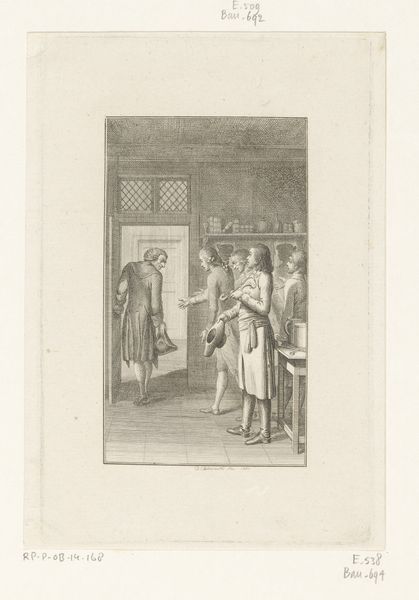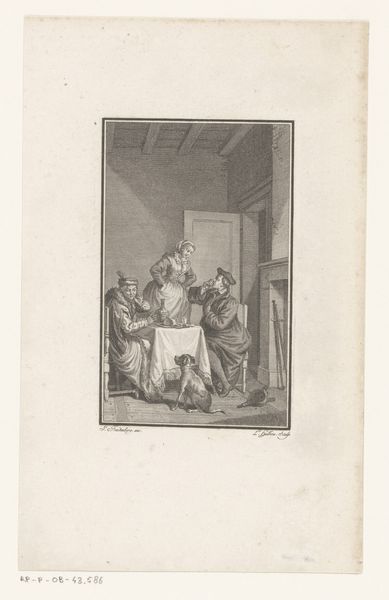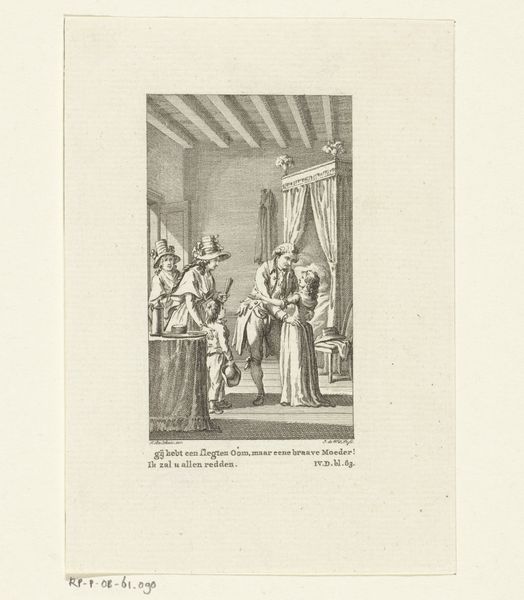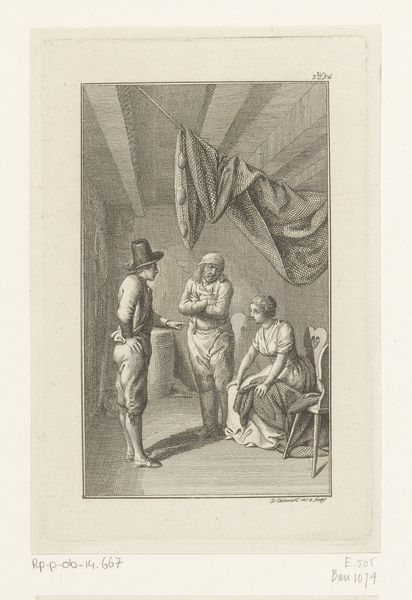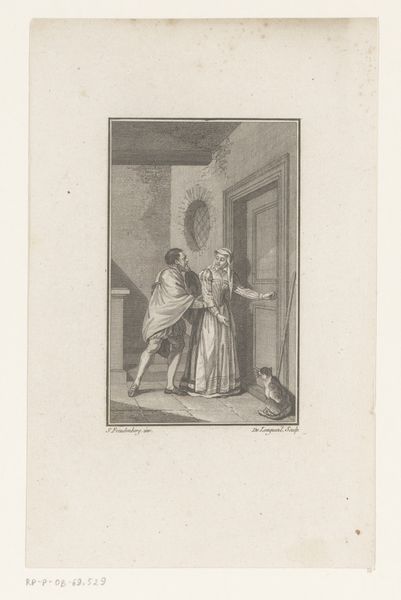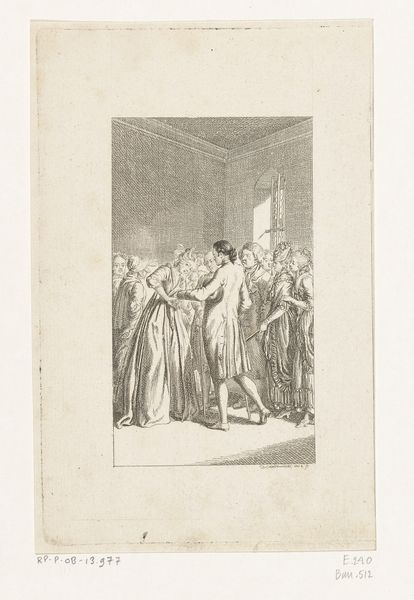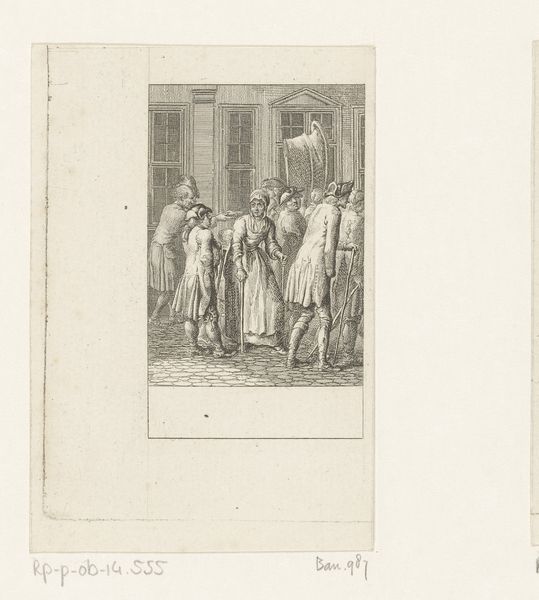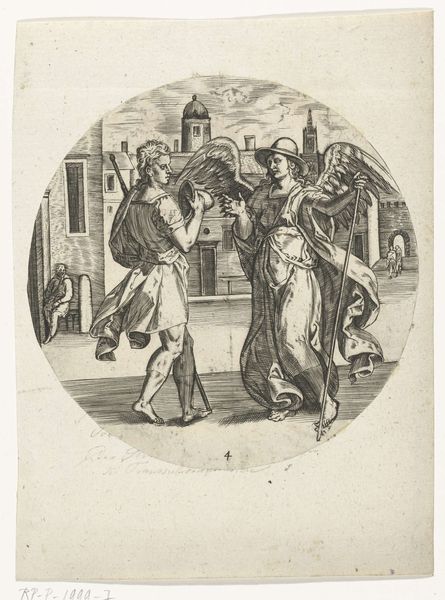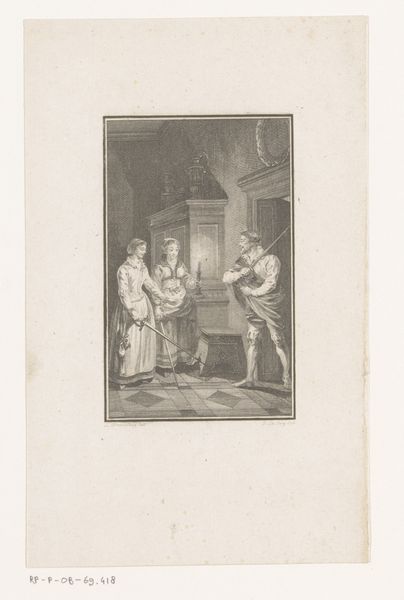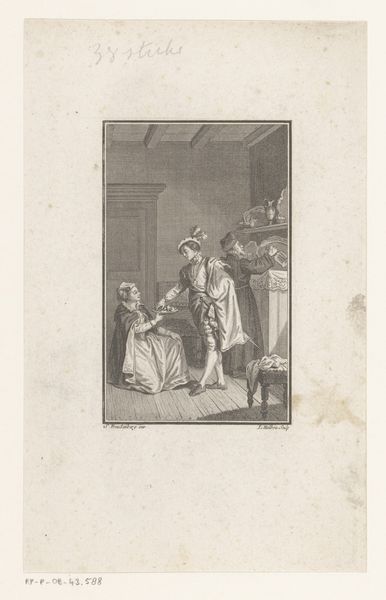
Dimensions: height 164 mm, width 94 mm
Copyright: Rijks Museum: Open Domain
Curator: Here we have Daniel Nikolaus Chodowiecki's etching, "Klärchen droogt de kleding van Karl," created in 1778. It's currently housed in the Rijksmuseum. Editor: The detail is striking for an etching; the whole scene has a slightly melancholy air about it despite what seems like a mundane, domestic situation. The crisp lines almost feel like tiny, repetitive stitches. Curator: Right, Chodowiecki, working in late 18th-century Germany, often captured these intimate genre scenes reflecting Enlightenment values. The rise of the middle class saw an increasing interest in the portrayal of daily life. The artwork signals this shifting societal focus and its celebration of everyday life, challenging conventional art subjects from royalty or religious iconography. Editor: I’m particularly drawn to how the material details are rendered: the crumpled clothing, the slight sheen on the man’s jacket. You can almost feel the stiffness of the linen and imagine the labour that went into its creation. Was this print intended for a wide distribution? To reach this emerging middle class? Curator: Precisely. Prints were becoming more accessible, acting as a form of visual media that reached beyond aristocratic circles. The subject matter caters directly to those of the middle class. Here, Klärchen embodies domestic virtue and her dedication to caring for Karl. Editor: It seems this image is reinforcing emerging social expectations of gender roles. Are Karl's wet clothes symbolic in some way, of perhaps an occupation that requires a service job out of doors? Curator: Perhaps, although wet clothes would equally symbolize hard work, something romanticized within these paintings depicting the idealized lives of this era's rising bourgeois class. And, given that it's rendered in a precise etching, the labor that created the artwork mirrors the theme of daily life within the picture. Editor: True. Thinking about the relationship between material and labour really sheds new light on what this seemingly simple artwork may imply. Curator: Exactly! Examining the work and its historic position through history offers new perspective on how the print functions in both an aesthetic and historical framework. Editor: Seeing this work through the lens of production, it encourages viewers to think about the value and cost of commodities and domestic duties during that era. Thank you for sharing this insightful outlook.
Comments
No comments
Be the first to comment and join the conversation on the ultimate creative platform.
